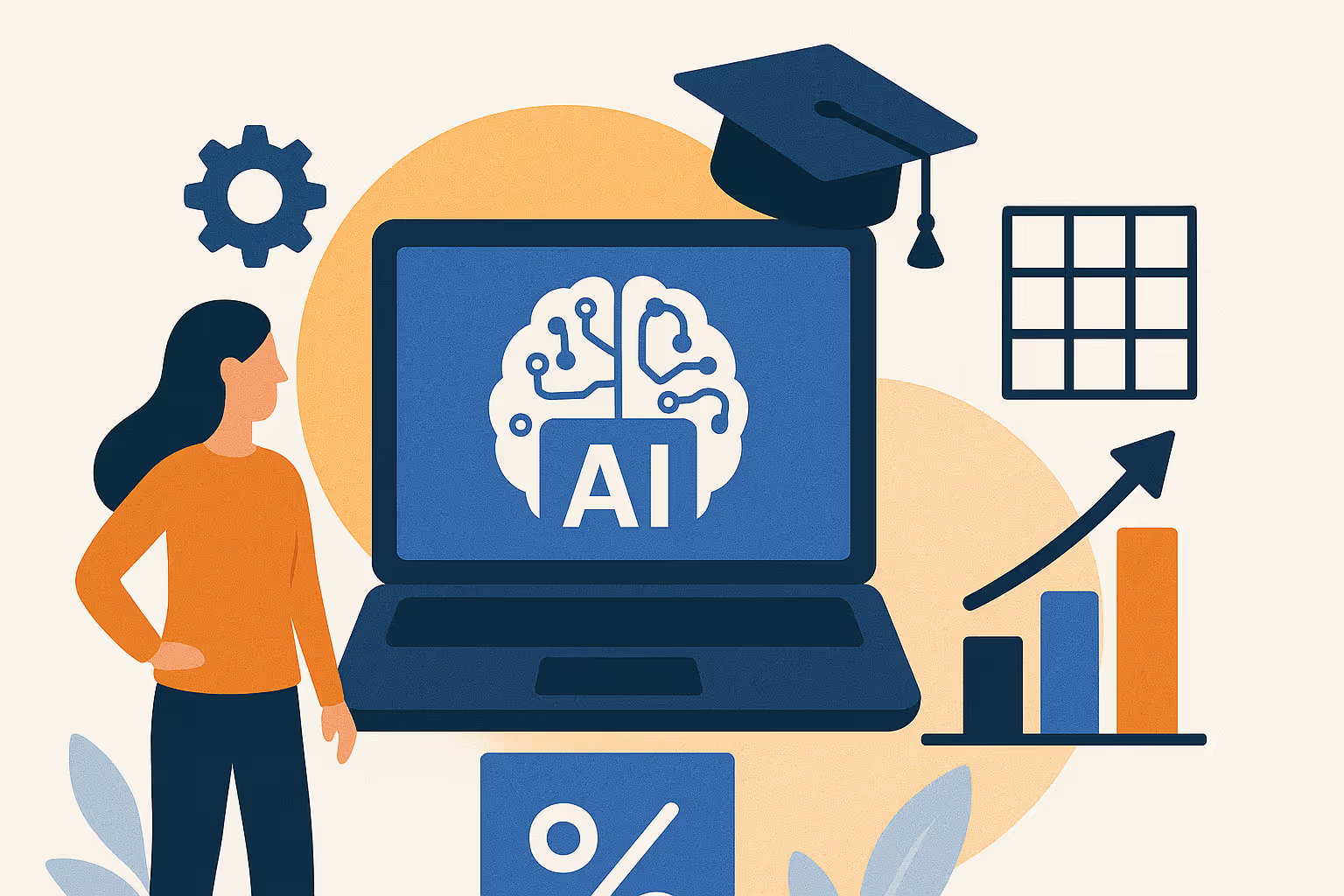About the Blog
As higher education leadership faces unprecedented challenges, leaders are under intense pressure to adapt and stay resilient. With AI stepping in to lighten the load and enhance decision-making, the path to stronger, more flexible higher education leadership has never been clearer.
During a recent episode of the Higher Ed Pulse, Mallory Willsea and Seth Odell highlight that resilience and adaptability are key qualities for leaders striving to guide their institutions through this era of transformation. At the AI Engage Summit, Odell further expanded on this concept during his keynote, presenting AI not just as a tool for operational efficiency, but as a catalyst for resilience in leadership. His insights provide a compelling look at how AI technology can serve as both a practical resource and a strategic ally for today’s leaders navigating complex institutional change.
The Resilient Leader: Meeting Higher Ed’s Challenges Head-On
The path forward for higher education leaders is demanding.
As Seth and Mallory emphasize, resilience in leadership starts with self-awareness, effective prioritization, and creating a psychologically safe environment for teams. Leaders are expected to make high-stakes decisions in uncertain times, balancing empathy with self-care to avoid burnout. Leaders today need mental toughness to navigate constant change and adapt strategies that respond to student needs and workforce alignment.
Higher education leaders can leverage AI to gain insights, reduce manual workloads, and allow more time for strategic decision-making. As Seth’s keynote at the AI Engage Summit illustrated, the power of AI extends beyond streamlining processes — it’s a vital support system that allows leaders to focus on high-impact areas and empowers them to manage stress and foster resilience across their teams.
To start integrating AI in practical, impactful ways, institutions can begin by automating high-volume tasks, such as handling routine inquiries and application processing, which frees staff from strategic work.
Selecting a versatile AI CRM platform, like Element451, allows leaders to centralize student data and streamline communication with prospective and current students. Starting with a single department, like admissions or student services, institutions can pilot AI to showcase its efficiency and time savings, creating a foundation for wider adoption. By focusing on small wins and gradually scaling up, leaders can harness AI’s power to alleviate daily pressures, drive data-informed decisions, and foster a more resilient, supportive environment across their teams.
How AI Supports Resilient Leadership in Higher Ed
1. AI Empowers Leaders to Focus on What Matters Most
AI in higher education leadership enables leaders to offload routine tasks, allowing them to focus on strategic priorities.
This is essential for resilient leadership, as Seth and Mallory note during their episode, emphasizing the importance of maintaining focus on mission-critical tasks to reduce decision fatigue and manage stress. AI-powered automation handles administrative tasks like registration reminders and student inquiries, freeing up leaders’ mental bandwidth for proactive, big-picture planning.
Through generative AI-powered search tools like Element451’s Bolt Discovery, institutions can provide personalized answers to student inquiries, thereby reducing the volume of questions that end up on leaders’ desks. This technology supports leaders’ resilience by allowing them to focus on driving transformative initiatives instead of being bogged down by day-to-day issues.
2. Psychological Safety and Trust through AI-Enhanced Communication
Building resilience within teams also means creating environments where psychological safety and open communication thrive.
As Seth highlights, leaders must foster spaces where team members feel secure in expressing challenges and uncertainties. AI can contribute here by providing real-time data that leaders can use to stay aware of team performance and morale. This data-driven insight enables leaders to tailor their support, addressing team concerns proactively.
AI-driven communication tools streamline outreach, making it easier for leaders to offer transparent updates and receive feedback across departments. AI-driven platforms can analyze engagement metrics, survey feedback, and workflow data, helping leaders proactively identify stress points and performance trends within their teams.
Using this data, leaders can tailor their support to meet specific needs, creating a more responsive and supportive work environment. Implementing AI-enabled communication tools also allows for transparent updates and two-way feedback, making it easier to stay connected and maintain open dialogue.
3. Data-Driven Decisions and Adaptive Strategies
As Seth notes, resilient decision-making in higher education leadership must be adaptive and iterative. AI equips leaders with real-time data analysis tools, allowing them to make informed and flexible decisions.
With AI-powered dashboards and analytics, leaders can monitor enrollment trends, program demand, and student engagement in real-time, adjusting their strategies based on emerging insights. This iterative approach helps leaders manage the stress of decision-making, as they can rely on data to guide them through complex challenges.
AI-driven platforms allow leaders to pilot small-scale projects, such as targeted outreach to prospective students interested in new program areas, and evaluate success before scaling up. This helps build resilience within teams by promoting a culture of testing, learning, and adapting rather than focusing on the end goal, or immediate, high-stakes decisions.
Leveraging AI for Stronger Leadership and Institutional Growth
Seth’s insights at the AI Engage Summit underscore AI’s transformative potential — not just as a technological tool but as a means of building organizational resilience. By integrating AI thoughtfully, leaders can support staff with 24/7 assistance, reduce routine workloads, and build psychological safety. Institutions that adopt AI are better equipped to meet students’ evolving expectations and respond to the fast-paced changes in today’s educational landscape.
AI can also play a crucial role in aligning higher ed with workforce needs. As more students seek specific skills rather than traditional degrees, AI-powered career mapping can help institutions design and market programs that match job market demands. This alignment not only strengthens the value of higher education but also boosts leaders’ confidence in their strategic decisions.
Building an AI-Ready Campus for Resilient Leadership
Moving forward, the path to resiliency in higher education leadership involves creating an AI-ready campus. Leaders can foster this transformation by:
- Championing AI Initiatives: Positioning AI as an essential part of their institution’s strategic goals enables leaders to align technology adoption with resilience-building efforts.
- Prioritizing Data Integrity: Good data is the backbone of effective AI solutions. Leaders must prioritize data quality to ensure AI-driven insights are reliable and actionable.
- Starting with Pilot Projects: By launching small AI initiatives, leaders can build buy-in and demonstrate AI’s potential to enhance both operational efficiency and team resilience.
As higher education grapples with mounting pressures, AI emerges as a vital tool for leaders to weather the storm. These thought-provoking insights remind us that resilient leadership isn’t about solving every problem alone; it’s about leveraging every available resource — AI included — to create an environment where both leaders and teams can thrive.
Don’t miss the full episode of the Higher Ed Pulse with Mallory Willsea and Seth Odell on building resilient leadership, and be sure to check out the AI Engage Summit replays for even more insights.










